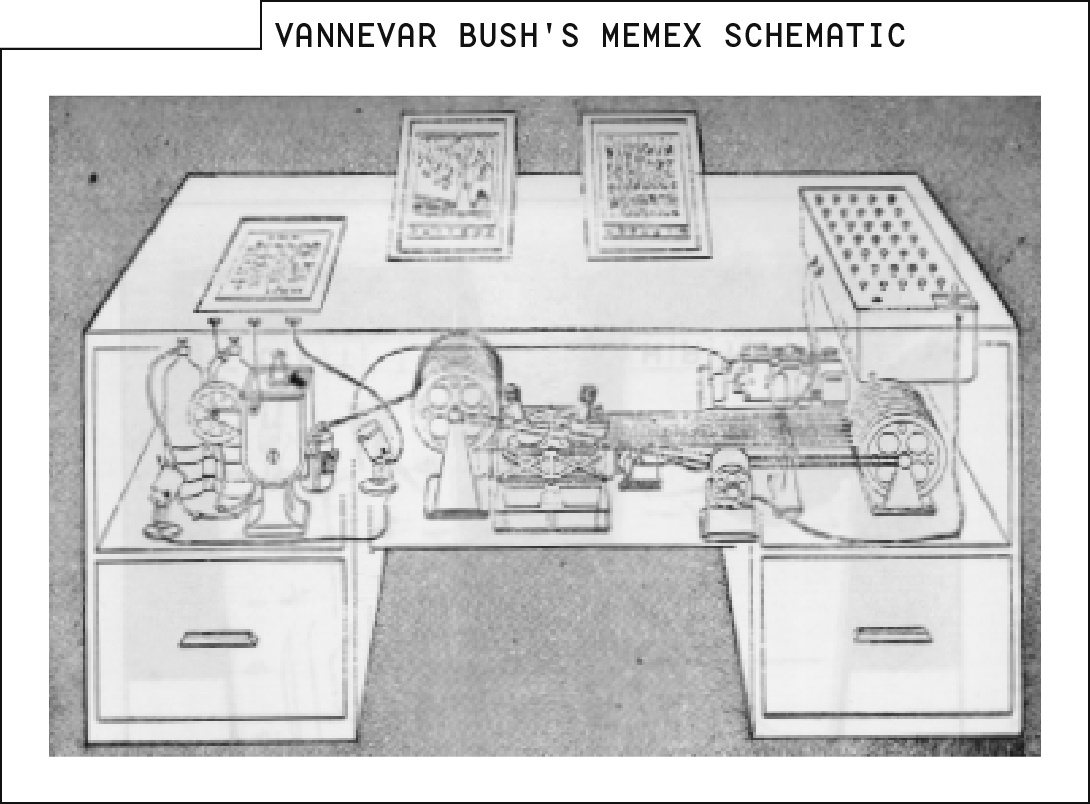Screens, Research and Hypertext
Powered by 🌱Roam GardenLink Database
Links weren't always embedded directly inside texts.
One obvious way around the security risks inherent in allowing other people to install backtrack links (the bi- half of bidirectional links) on your website is to remove hyperlinking from the document level entirely.
HTML links are embedded directly in content. If you peek under the hood, they look like this:
The first part of a sentence that contains <a href="https://mycoollink.tld">my clever hyperlinked</a> text.
If you were to copy that text, the link would come along with it.
If you've come of age post-web, chances are that the idea of the hyperlink as something that is integrated directly into a text seems natural and obvious. But as George Landow points out, it's actually a pretty big departure from the hyperlink as it was originally understood (link and emphasis added).
The user of the memex, we recall, created trails of associative links on top of already existing texts, saved those trails, and shared them with others. Different readers could create very different collections of links for the same texts. Links, in other words, exist outside the individual lexia in this kind of hypermedia.
Hypertext systems like the one Landow describes did exist, once upon a time. These consisted of a separate database—a link database or linkbase—and a server whose entire job was to store hyperlinks. The linkbase would store anchors from the source file and sets of possible destinations for those links. In this way, different people could create different destinations for the same source anchor.

Storing hyperlinks in a separate database creates all sorts of interesting opportunities. You might, for example:
Show different links to registered and unregistered users.
Show an explainer to a journalist and a technical report to an academic researcher.
Show a French or an English version of a document, based on the browser's language settings.
It's adaptive content at the level of the hyperlink.
Perhaps more pertinent, though, is that a linkbase facilitates online research. Research is about finding the links between texts. Being able to literally document those links would be a useful first step.
Alas, the linkbase—like its even simpler cousin, the link storage service—has mostly died out, swallowed up by the ubiquitous feed.
For more context
A link database helps solve the bad actor problems inherent in bidirectional links.
What to read next
Storing links separately from text is just one feature of a web that's better for research.
Other items of interest
Research isn't about texts.
Links store references, not relationships.
The feed has relegated hyperlinks to some navigation around a document.
Referenced in
A Brief History of Hypertext
Vannevar Bush publishes "As We May Think" in The Atlantic. Bush proposes a device he calls the Memex, which would store content on microfilm. Each frame of microfilm could be tagged, and the Memex could use those tags to index and cross-reference all of the content. Each user would be able to create their own web of links and annotations.
Essentials of a Better Web
They overlay the text. Hyperlinks that are embedded in the text show only one set of connections—namely, the ones that the author happened to care about at the time. Hyperlinks laid over the text (via a link database) allow for different authors to make different connections, or even for a single author to link one lexia to multiple other lexia.